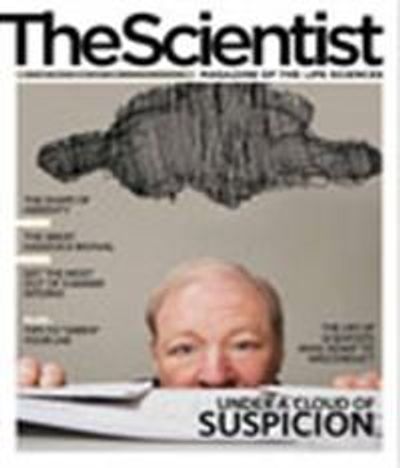The number two-ome

Eric Alm bursts into the Massachusetts Institute of Technology lab and grabs a small, maroon-colored sports duffel bag. "Give me seven and a half minutes," he says with a sense of urgency. "I'm taking a sample and I know exactly how long that takes me." Into the duffel bag he stuffs a disposable plastic commode about the size of a fedora hat, latex gloves, an autoclaved sampling tube, and a biohazard container.
"I've been extremely stressed out today," Alm says.
"Have you been taking your blood pressure?" Lawrence David asks eagerly.
"Yeah, it was really high. This should be interesting."
Alm, an evolutionary microbiologist, and David, his graduate student, are engaged in what they're calling the HuGE (Human Gut Ecology) Project—an effort to track how the microbial communities in their own digestive tracts...
Bacterial densities in the colon can reach up to 1 trillion cells per milliter of feces. But researchers don't know how this vast microbial ecosystem changes from day to day. In the past, initiatives such as the Human Microbiome Project—a 5-year, $115 million program spearheaded by the National Institutes of Health—have focused on characterizing the gut flora in groups of people, but not on a fine temporal scale.
But to the MIT researchers, the relevant measure of time for the gut is 24 hours. This is the timescale at which bacteria replicate, thus daily sampling is necessary to reveal the system's true dynamics, Alm says. Naturally, "that's a lot of sampling." With his shoestring budget of start-up funds from MIT and the Broad Institute, Alm realized no stranger would volunteer to take part in his proposed study—so he signed himself up. He then polled his graduate students for their levels of interest. "Most of them gave me a strange look, except for Lawrence [David]," Alm recalls. "I said, 'Are you interested in this?' And he said, 'You have no idea how interested I am.'"
Since April, Alm and David have been going to the bathroom and taking core samples of their feces, as well as tracking around 100 different metrics of their personal health and daily habits—diet, exercise, mood, sleep patterns, oral hygiene, heart rate, blood pressure, you name it—to see if samples change with daily routines. After the collection phase, scheduled to continue for 6 to 12 months, they ultimately plan to analyze their stool samples using small-subunit (16S) ribosomal RNA gene-sequence–based surveys to characterize their bacterial communities on a day-to-day basis. Alm's postdoc Arne Materna will then have the unenviable task of sequencing the species within the fecal matter. "This is the part I'm still trying not to think about," says Materna. He is using the HuGE project as a test case for a new multiplexed sequencing approach that should allow researchers to probe the microbial diversity of many different samples simultaneously, and with a high degree of accuracy, for a mere $10 a sample. "It will become a game changer," Materna says.
The two researchers are fervently embracing the project. Their wives, however, are less enthusiastic. "My wife has expressly forbidden me from keeping samples in the house," says Alm, who drives to work on the weekends to get his samples promptly into the –80°C freezer. David's wife, however, is more accommodating. "I was eventually able to convince my wife that [storing feces at home] is a reasonable thing to do," he says. "[The samples] live next to the chocolate ice cream. She's not very happy."
But it's all in the name of science, they contend. In January, David wrote a post on his personal blog describing the two of them as the "Watson and Crick of poop." But Alm was quick to correct him. They're the Watson and Venter of poop, he argued, referring to the first two men to have their own entire diploid genomes sequenced. "We'll be the first two complete years' worth of feces sequenced," says Alm. "But right now, it's just a freezer full of shit."
Interested in reading more?




